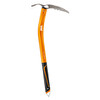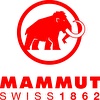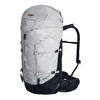Adam Ondra: the Dawn Wall El Capitan interview
On Monday afternoon Adam Ondra topped out onto the summit of El Capitan. In doing so, he became the first to repeat - and the first to lead all pitches - of Dawn Wall, the route considered the most difficult big wall climb in the world freed by the Americans Tommy Caldwell and Kevin Jorgeson after 19 days on the wall and, previously, a myriad of exploration trips up this nigh 1000m line spread out over seven years
Ondra reached the summit of this granite monolith together with his climbing partner Pavel Blažek after 8 days of intense and thrilling climbing, often at night to ensure the right conditions, and after having previously worked the route. This reconnaissance was always carried out ground-up and began as soon as Ondra set foot in Yosemite Valley for the first time in his life in mid-October.
Throughout this period the 23-year-old from the Czech Republic consistently demonstrated unusual levels of frankness for a cutting-edge athlete, as well as abounding in admiration for the vision and efforts of Caldwell and Jorgeson who, for the record, between 27 December 2014 and 14 January 2015 carried out a "team free ascent"; both free climbed the entire route, sometimes seconding the easier pitches, and both leading the more difficult pitches. It's worth highlighting that for the Americans the seven years of exploration that culminated in the first free ascent were marked by preponderant doubts concerning the possibility, or impossibility, of discovering a line that might go free. The time they invested in this task was absolutely secondary therefore. Ondra, for his part, benefitted from the certainty that the line that combines the famous Mescalito (Charlie Porter, Hugh Burton, Steve Sutton, Chris Nelson 1973) with Wall of Early Morning Light (Dean Caldwell, Warren Harding, 1970) was feasible; an enormous advantage, as he himself often stated.
Before starting up Dawn Wall - coincidentally Ondra's first free climb on El Capitan and also the most difficult on the 'Big Stone' - he obviously banked on capabilities that have no equals: 9b+ redpoints and 9a onsights on sport climbs, 8C+ boulder problems… a sort of 'Triple Crown' that attests to a level of ability no other climber has reached so far. To this one need to add his previous experience on multi-pitch climbs (Silbergeier 8b+ as a mere 14-year-old and Tough Enough 8c in a single day serve as just two examples) and also on psychologically demanding routes up the Czech sandstone outcrops and also British trad. Having said that, the climbing El Capitan's blank granite, polished completely smooth by the glaciers thousands of years ago, is completely different compared to the overhanging limestone that Ondra had been used to in the past. What is extraordinary is the speed with which he managed to adapt to this style of climbing. And even if his repeat has significantly raised the bar, the lasting feeling is that we've only begun to catch a glimpse of Ondra's absolute maximum on this type of terrain.
Ondra flew to the States specifically to repeat Dawn Wall, and he did so with an ascent that was magnificent, both athletically and mentally. Although the world's mass media steered clear of Yosemite this time, the echo within the climbing community has been enormous, not only from the thousands of fans who followed his efforts, difficulties, doubts and progress live via the social media channels, but also from his peers who have celebrated with him. Starting with Caldwell and Jorgeson who wrote, respectively, "speechless" and e "You're a total beast! I can't wait to see what happens when you find a 6 year project… standards are going to go to the moon."
Adam, let's start with those who paved the way, Tommy Caldwell and Kevin Jorgeson. You've already commended their ascent, but is there anything else you wish to add?
It takes a lot courage and dedication to find a free route on El Cap, especially in that part as it looks so blank and steep. And the chance of encountering one section of total blankness is high. But Tommy just went for it and did not care. He spent a couple of years before he actually found the climbable link between the lower part of Mescalito and the higher section of Wall of Early Morning Light. This link is actually pitch 14 and 15, the crux traverses. Tommy and Kevin put so much effort into the climb and faced so many question marks and logistical problems that I cannot really compare my effort to theirs. I had it prepared, had all the knowledge. I knew it was possible. That was the most important thing! They demonstrated dedication and vision. Thank you Tommy and Kevin for this route, it is a true masterpiece.
You mentioned it: so how important was the fact that you knew Tommy and Kevin had done it?
It made my work much easier. And I do not think it is very important that they did not lead all the pitches, in my mind it doesn't decrease the value of what they did at all.
What were your first thoughts when you finally entered the valley and saw El Capitan for the first time?
Mmm, I must say that all I was interested in was seeing El Cap. And my God, it just looked really big. And beautiful. I don't think I've ever seen a more beautiful rock face.
You immediately started working the route. Can you remember which pitches you onsighted and which you had to work?
It took me 4 days to get to the top somehow and fix the lines along the route. Then, I guess I had up 10 more days on the wall just working the pitches. I onsighted up to 7c, everything else I had to work, mainly because without knowing the beta the pitches are scary and also because Yosemite has the hardest onsighting in the world, for sure.
Climbing big walls is very much teamwork and in Pavel Blazek we believe you had a perfect partner, is this correct?
Yes, I have been incredibly lucky to find Pavel as a belayer. He contacted me roughly a year ago, asking me whether I would like to make a photo exhibition with him. I was interested in the idea, but we still could not find the right topic. In the meantime, we went to Norway a few times together and it got obvious that the right topic for the photo exhibition would be Yosemite. At one point he offered to belay me on the Dawn Wall. I was kind of surprised that he was excited about the idea of spending multiple days on the wall, hauling, belaying at night and in the cold, but he was up for it! Retrospectively, I could not have asked for anyone better. It was really fun to climb with him and being filmed by the legend Heinz Zak. It all worked together perfectly.
El Capitan's granite slabs and cracks are very different to what you've been used to. How much did you have to change and adapt your style of climbing?
I expected Yosemite climbing to be different. I expected to struggle for the first days, mostly when crack climbing. But in the end I discovered that the cracks are kind of the same everywhere. What is really unique and weird through are the laybacks and face climbing, due to the friction and the footwork they require. Laybacks are incredibly strenuous (especially if you're not climbing them right) and require incredible body tension - due to the slippery and non-existing footholds. Let's say if some of the 8b+ laybacks were on sticky sandstone instead of slick glacier-polished granite, they would be easy 7a's. I really struggled on the laybacks in the beginning. They felt so insecure I thought I'd slip every second. I wasn't able to relax and I was scared.
So what about the face climbing
Footwork was the real struggle. I thought my footwork was quite good, I'm used to standing on terrible footholds, but the Yosemite footholds are on a different level. let me explain this better: if a route is even only slightly overhanging, you don't place all your weight on your feet, and 99% of 9a's are overhanging. Here though, almost all the time you're placing your entire weight on tiny razorblades. And this is crucial, because the holds are simply too poor to hang on. And most importantly, you do so for HOURS. The pressure of these razorblades onto the few millimeters of rubber on your rock shoes is incredible - it can literally tear them apart. Actually, every shoe feels too soft on the Dawn Wall. After trying numerous shoes, Katana Laces were the only ones which fit perfectly. Nevertheless, I had to resort to using razorblades and sandpaper to sharpen the edges of my shoes after a couple of tries.
And…
I also had to start climbing so much slower than I am used to on sport climbs or in competitions - climbing fast and efficiently simply involved such high chance of slipping that it was not worth it. Climbing like a snail, taking my time and doing the pitch first go turned out to be the best approach.
The 14th pitch stopped you seven times and in the end you were forced to wait another day to redpoint it…
It is very special pitch. I'd be really curious to see what it's like as a single pitch climb at a crag. Before the final push I hadn't been worried about that pitch actually. It involves three boulder problems, the first one is supposed to be the hardest, but I had never really found it very hard before. The there was the third boulder problem, that took me three days to get the beta, but when I got the sequence which was right for me, it felt fine. On the push though, I just kept slipping on the first boulder problem. And I found it funny: I just could not believe it. I mean, slipping once or twice would be normal, but slipping 6 times in 2 hours was just unbelievable. Then I finally made it through, but I fell on the very last move of the pitch.
How did that feel?
Devastating, but I did not really lose hope. And the next day, I just crushed the pitch. I climbed slower, more relaxed and even precisely with my feet. It was major breakthrough for me. But the real linking crux was pitch 15. It is very hard mentally due to its sharp holds. You know you cannot waste any tries. The more you try, the more you trash your precious skin and if you get a split, then that's a real problem. On my first attempt I fell at the end of the crux. Giving it a second try that evening was very risky, because my skin was very thin and could cut open, but after a huge fight I succeeded and didn't even cut open my skin!
On the Loop pitch you made a massive, long pitch, but then split this at the no-hands rest. Can you provide us with some info about this novelty?
I made no novelty. In the end, I did it the same way as Tommy. Pitch 16, can be climbed via Dyno or Loop. I opted for the Loop. That involves making heinous 20m down climb to a ledge, easy traverse left and climbing upwards via strenuous layback, passing your belayer and finishing 5 meters above my belayer and start of the pitch 17 in a no hand stance. There is no real belay there actually. And that is the same place where Dyno pitch ends. From this no hand stance, pitch 17 continues, which is 8b+ layback for another 20 meters.
What did you do?
My original plan was to link 16 and 17 into one monster pitch, which would make it at least 8c+ and 60 meters of climbing. Because I found it more logical to it that way and not finishing the pitch 16 5 meters above the last belay. So I did the Loop pitch, took a rest in the no-hand stance which marks the end of pitch 16 and start of pitch 17, tried to continue but fell. Then I lowered myself back to no-hand stance and did the pitch 17, without reclimbing the Loop pitch.
You spent "only" 8 days repeating the route. You once said that repeating it in under 24 hours would be a lifetime ambition
Yes, it is VERY hard, but possible. Let's see if I get psyched for it in a few years. But it would require very specific training, a LOT of work on the wall and an overcast and cold day. With temperatures above 5°C, your skin wouldn't hold.
Digital Dawn Wall… was updating, taking photos and giving interviews live ever difficult? Why did you choose to do this?
It certainly could increase the pressure I was under when trying to repeat the climb, but as long as I was successful, it wasn't really a problem. I mean, it was an interesting experience, and I hope it was also for the people who followed my updates. That's why we decided to go for it.
What has Dawn Wall taught you?
So much! Both for my actual climbing (what life is like on a big wall for instance, climbing slower when it is needed, new styles of climbing I had to adapt to) to mental aspects of me as a person
How happy are you now?
Mmm, I will be happy for a few more weeks just from this Dawn Wall feeling. So I guess I am very happy indeed.
DAWN WALL
THE INDIVIDUAL PITCHS
P1: 5.12b, P2: 5.13a, P3: 5.13c, P4: 5.12b, P5: 5.12d, P6: 5.13c, P7: 5.14a, P8: 5.13d, P9: 5.13c, P10: 5.14a, P11: 5.13c, P12: 5.14b, P13: 5.13b, P14: 5.14d, P15: 5.14d, P16: Dyno Pitch 5.14d, Loop Pitch 5.14c, P17: 5.14a, P18: 5.13c, P19: 5.13c, P20: 5.13c, P21: 5.13c, P22: 5.12c, P23: 5.9, P24: 5.11, P25: 5.11, P26: 5.11d, P27: 5.11c, P28: 5.12c, P29: 5.12b, P30: 5.13a, P31: 5.12a, P32: 5.12b
BY DIFFICULTY
5.9 (5a): 1
5.11 (6b+): 4
5.12 (7a+): 8
5.13a (7c+): 2
5.13b (8a): 1
5.13c (8a+): 7
5.13d (8b): 2
5.14a (8b+): 4
5.14b (8c): 1
5.14d (9a): 2
Total: 32
RELATED NEWS
15/01/2015 - Tommy Caldwell and Kevin Jorgeson free climb the Dawn Wall on El Capitan
19/10/2016 - Adam Ondra sees first light on Dawn Wall in Yosemite
23/10/2016 - Adam Ondra Yosemite Dawn Wall update #1
29/10/2016 - Adam Ondra Yosemite Dawn Wall update #2
07/11/2016 - Adam Ondra Yosemite Dawn Wall update #3
15/11/2016 - Adam Ondra starts 'final push' on Dawn Wall in Yosemite
19/11/2016 - Dawn Wall: Adam Ondra on cloud nine on El Capitan
20/11/2016 - Adam Ondra continues his victory march on Dawn Wall
22/11/2016 - Mission accomplished: Adam Ondra completes second free ascent of Dawn Wall
| Expo.Planetmountain | |
| La Sportiva | |
| www | |
| Instagram Pavel Blažek | |
| Instagram Adam Ondra | |


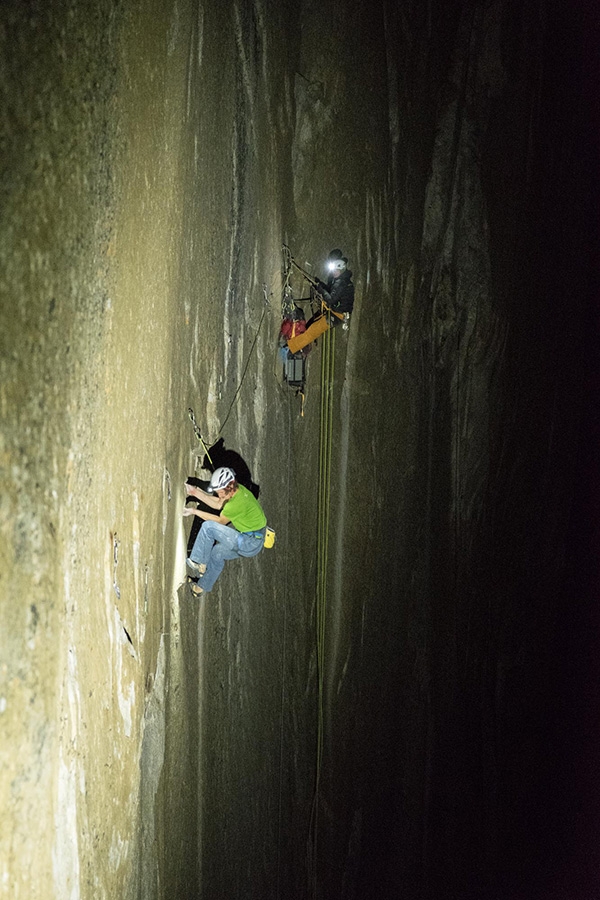
 1 / 63
1 / 63
 Copia link
Copia link

 Heinz Zak
Heinz Zak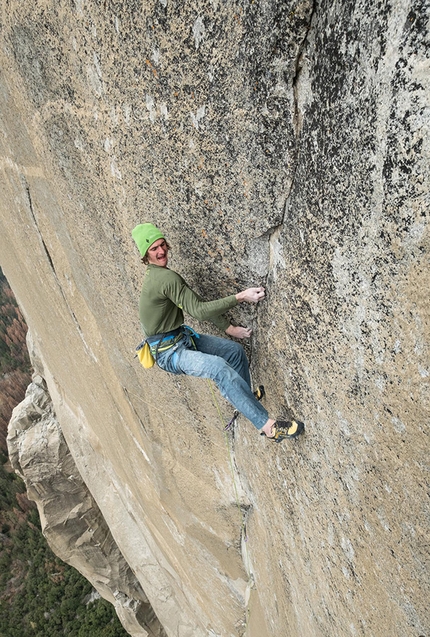
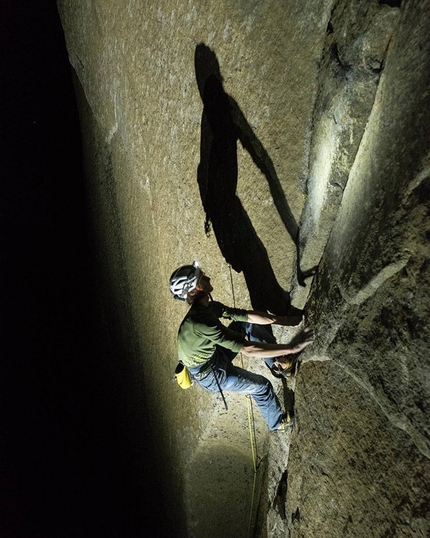
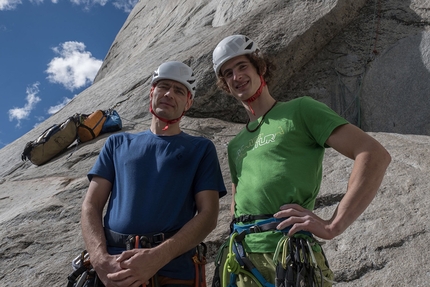
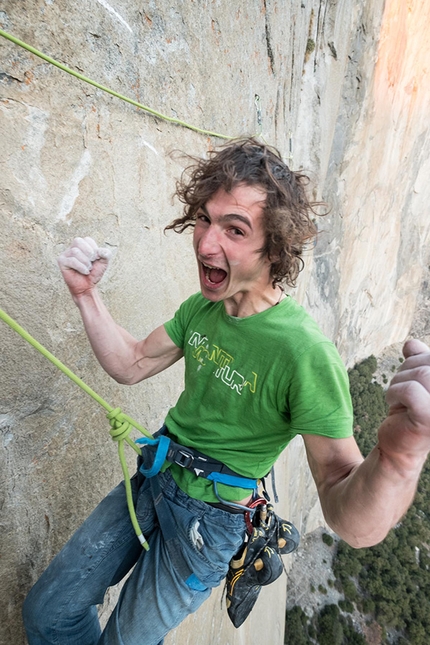
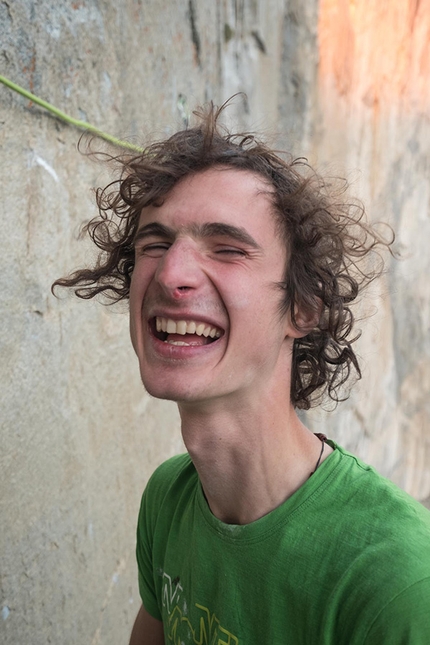
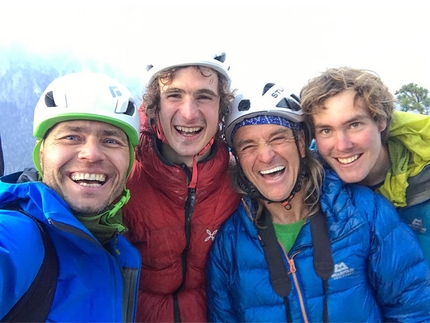
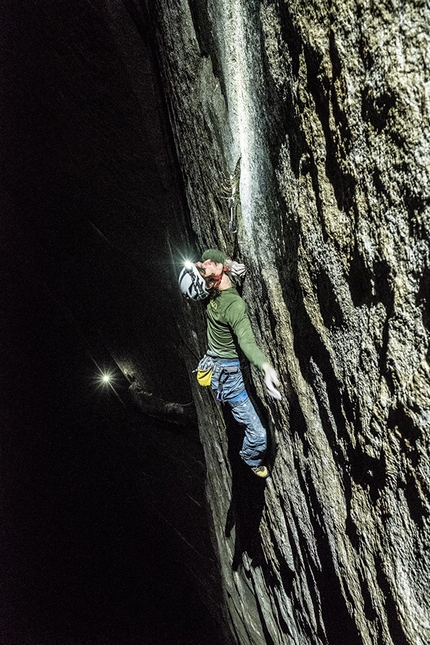
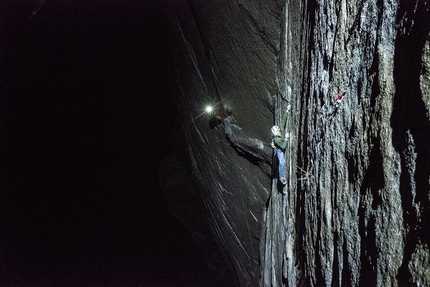
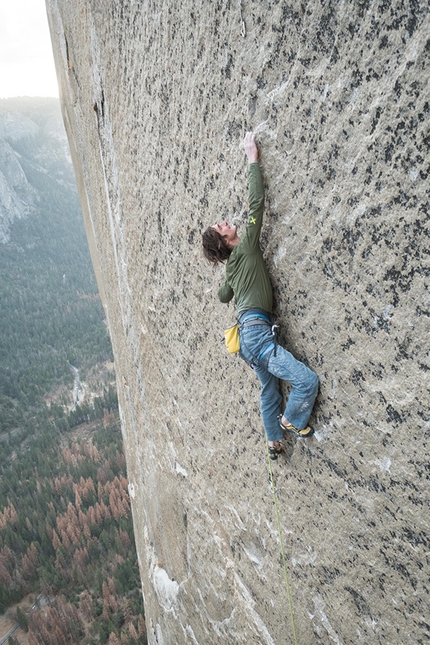
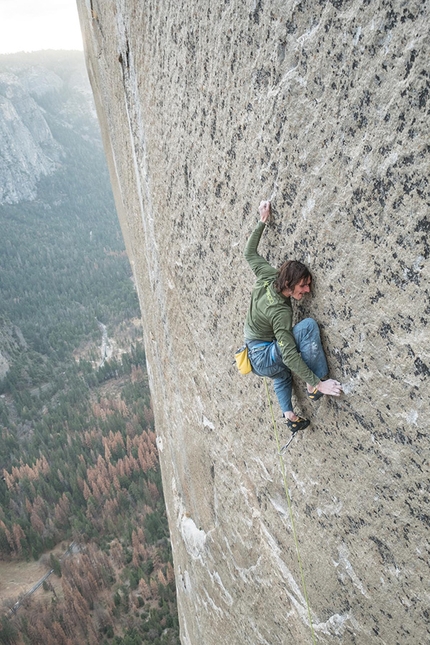
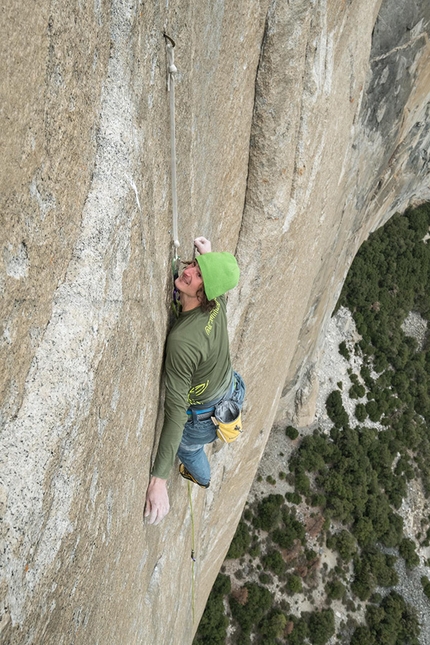
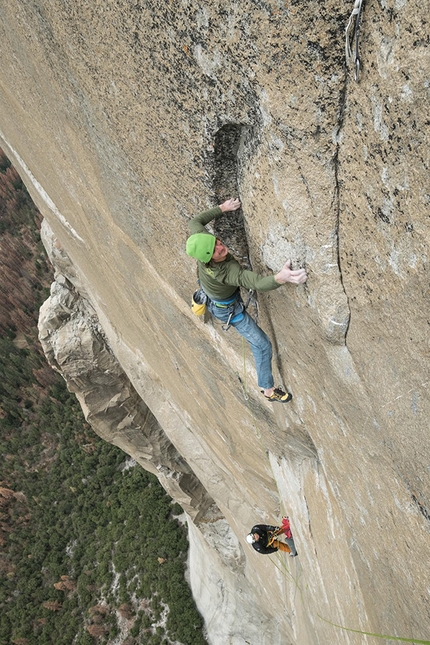
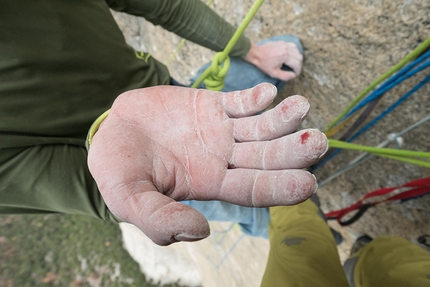
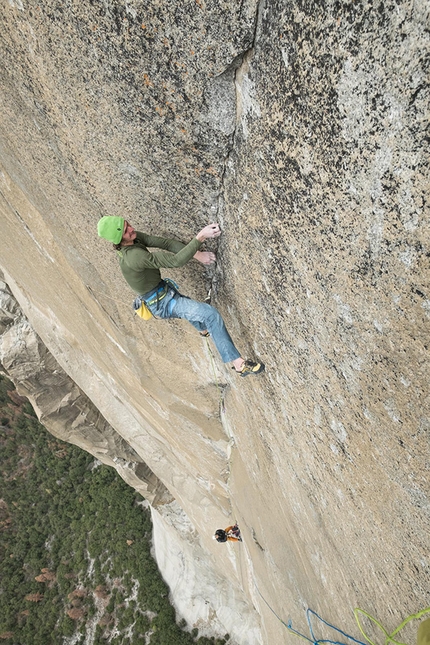
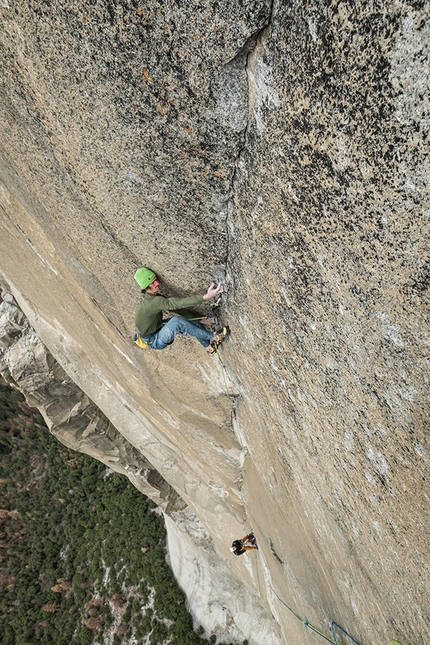
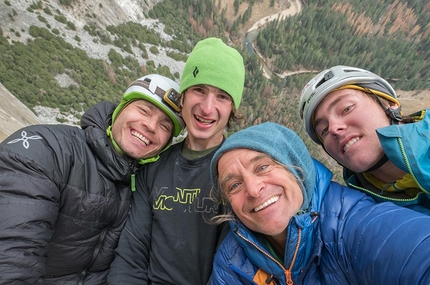
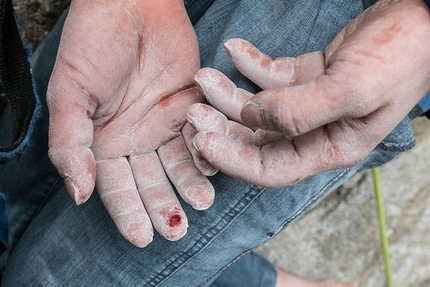
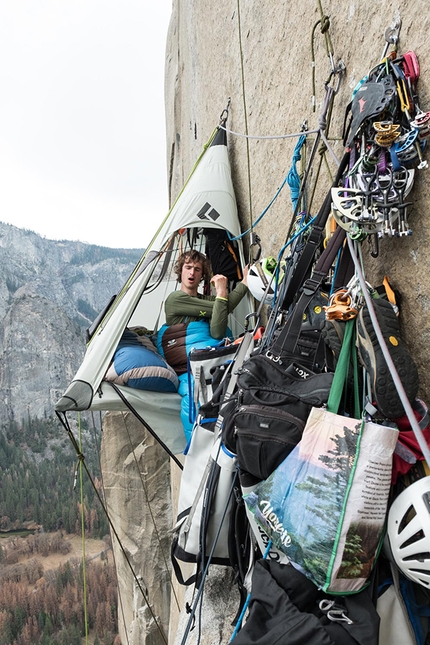
 See all photos
See all photos















